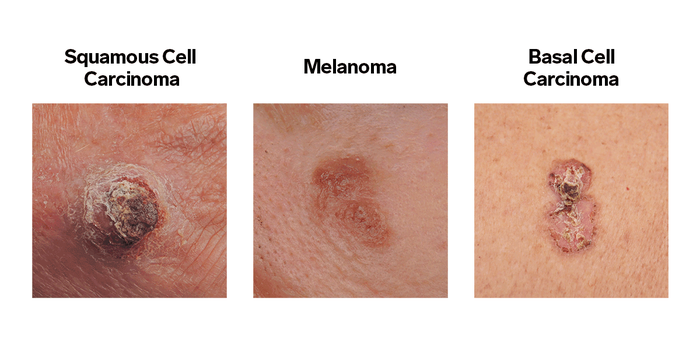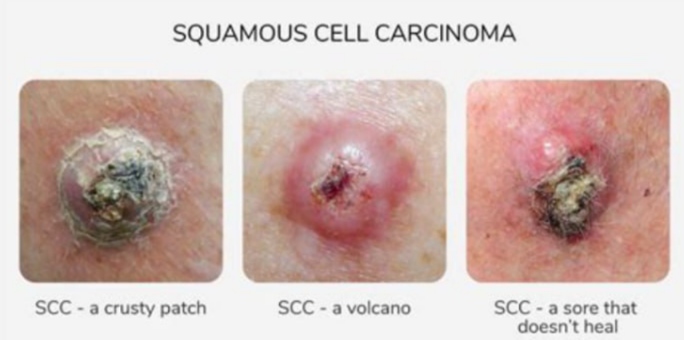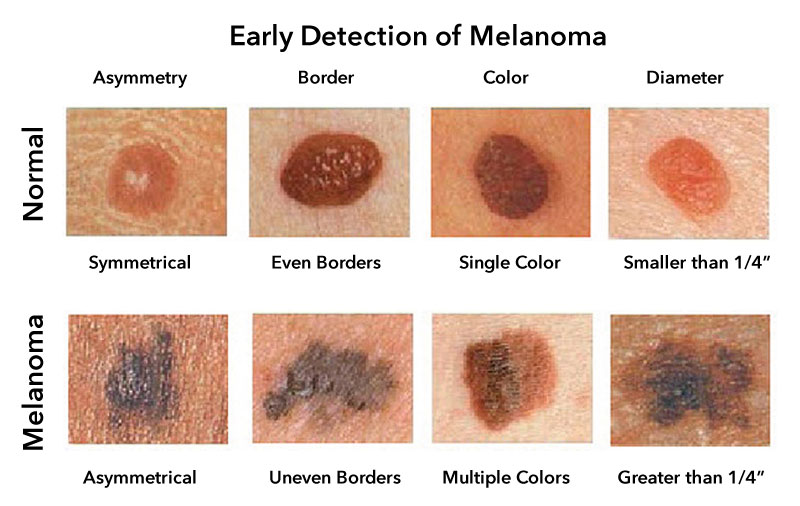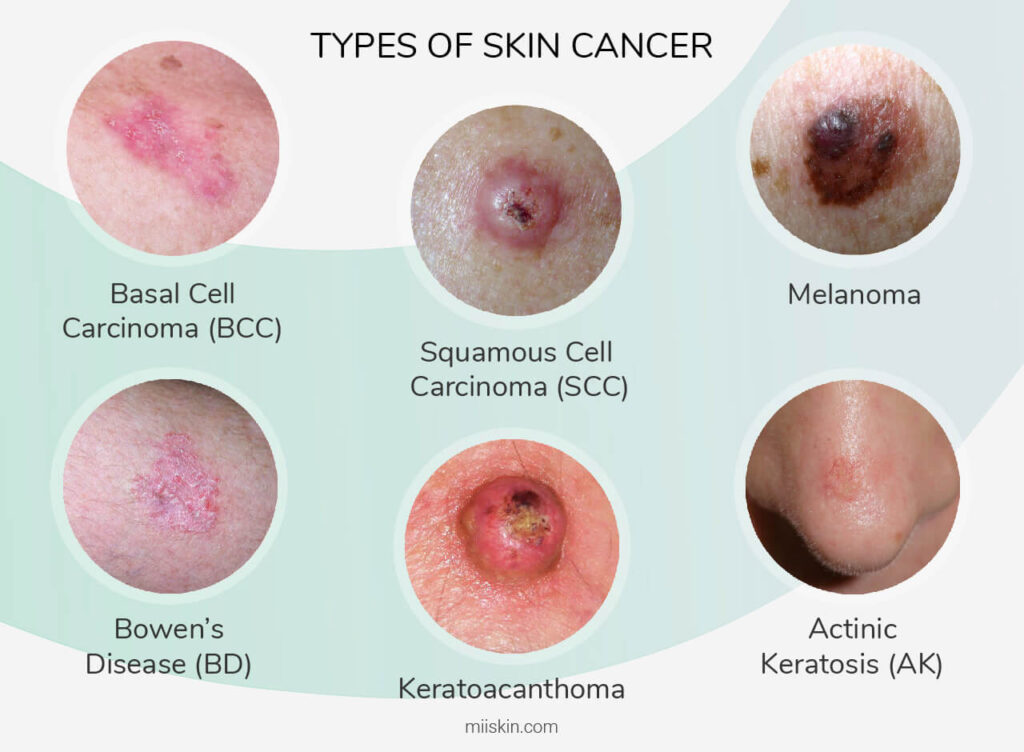
Skin cancer is the most common form of cancer worldwide. While early detection can save lives, understanding the differences between the main types — Basal Cell Carcinoma (BCC), Squamous Cell Carcinoma (SCC), and Melanoma — is crucial for prevention and timely treatment.
1. Basal Cell Carcinoma (BCC): The Most Common and Least Aggressive

Basal Cell Carcinoma accounts for about 80% of all skin cancers. It develops in the basal cells, which are located in the lowest layer of the epidermis.
Common signs include:
- A pearly or waxy bump on sun-exposed skin (especially the face, neck, and ears)
- A sore that doesn’t heal or repeatedly bleeds
- Flat, flesh-colored, or brown scar-like lesions
Risk factors:
- Chronic sun exposure
- Fair skin and light-colored eyes
- A history of sunburns or tanning bed use
Treatment and prognosis:
BCC rarely spreads (metastasizes), but it can cause local tissue damage if untreated. Treatments include surgical excision, cryotherapy, and topical medications.
2. Squamous Cell Carcinoma (SCC): More Aggressive but Highly Treatable

Squamous Cell Carcinoma develops in the squamous cells that make up most of the skin’s upper layers. It’s more likely than BCC to spread to other parts of the body if left untreated.
Common signs include:
- A red, scaly patch or crusted sore
- A firm, raised lump that may ulcerate
- Growths on sun-damaged areas such as the scalp, lips, ears, and hands
Risk factors:
- Long-term sun exposure
- Weakened immune system
- Exposure to carcinogens like arsenic
Treatment and prognosis:
SCC is often treated with surgical removal, electrodessication and curettage, or cryotherapy. When detected early, the cure rate is high.
3. Melanoma: The Deadliest Form of Skin Cancer

Melanoma arises from melanocytes, the pigment-producing cells in the skin. Although it’s less common, melanoma is the most dangerous type due to its potential to spread rapidly.
Common signs — the ABCDE rule:
- Asymmetry: One half doesn’t match the other
- Border: Edges are irregular or blurred
- Color: Multiple colors or uneven pigmentation
- Diameter: Larger than 6mm
- Evolving: Changes in size, color, or shape
Risk factors:
- Excessive UV exposure
- Family history of melanoma
- Presence of numerous or atypical moles
Treatment and prognosis:
Treatment depends on the stage and may involve surgical excision, immunotherapy, targeted therapy, or chemotherapy. Early detection leads to excellent outcomes, but advanced melanoma can be life-threatening.
Final Thoughts

Skin cancer is highly treatable when caught early. By recognizing the warning signs and taking preventive action, you can protect your skin — and your life.
If you notice any suspicious skin changes, consult a qualified dermatologist promptly.

